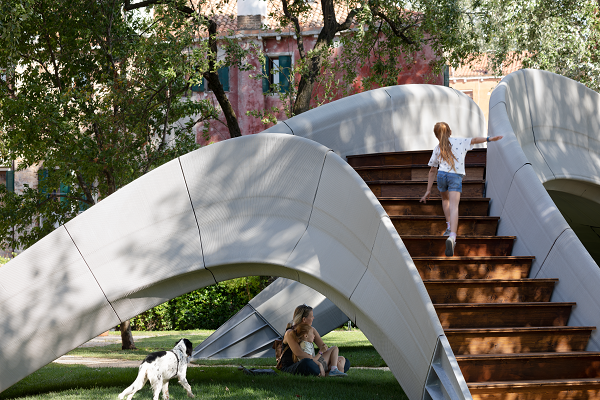Holcim unveils world’s first 3D concrete printed bridge

Holcim has unveiled Striatus, the world’s first 3D concrete printed bridge that is now open to the public in Venice, Italy. It was designed by Block Research Group and Zaha Hadid Architects, in collaboration with incremental3D and Holcim.
The footbridge holds together through compression with no reinforcements, applying computational design and 3D printing, for minimal material use and maximum strength.
ETH Zurich co-director of the Block Research Group Philippe Block adds: “The name ‘Striatus’ reflects the bridge’s structural logic and fabrication process. In arched and vaulted structures, the material is placed such that forces can travel to the supports in pure compression. Strength is created through geometry, using a fraction of the materials used in conventional concrete beams.”
Holcim Australia and New Zealand chief executive George Agriogiannis confirmed that Striatus is made possible by a specific, custom-made ink, from Holcim’s TectorPrint range, developed by its 3D Concrete Printing research team.
It sets a blueprint to build for the future using advanced technologies from computational design to 3D Concrete Printing. The next generation of inks can include Holcim’s green building solutions, such as ECOPact green concrete, including recycled construction and demolition waste.
Holcim is working on a range of 3D Concrete Printing applications, from complex infrastructure to affordable housing. In Malawi, Holcim launched the world’s first 3D concrete printed school, taking only 18 hours to build the walls and using 70% fewer materials than traditional building techniques.
The organisation is also working with GE Renewable Energy and COBOD to 3D concrete print taller wind turbine towers on-site, doubling their height to harness stronger winds and capture 33% more renewable electricity at a lower cost.
Striatus is now open to the public during the Venice Architecture Biennale until November 2021.
